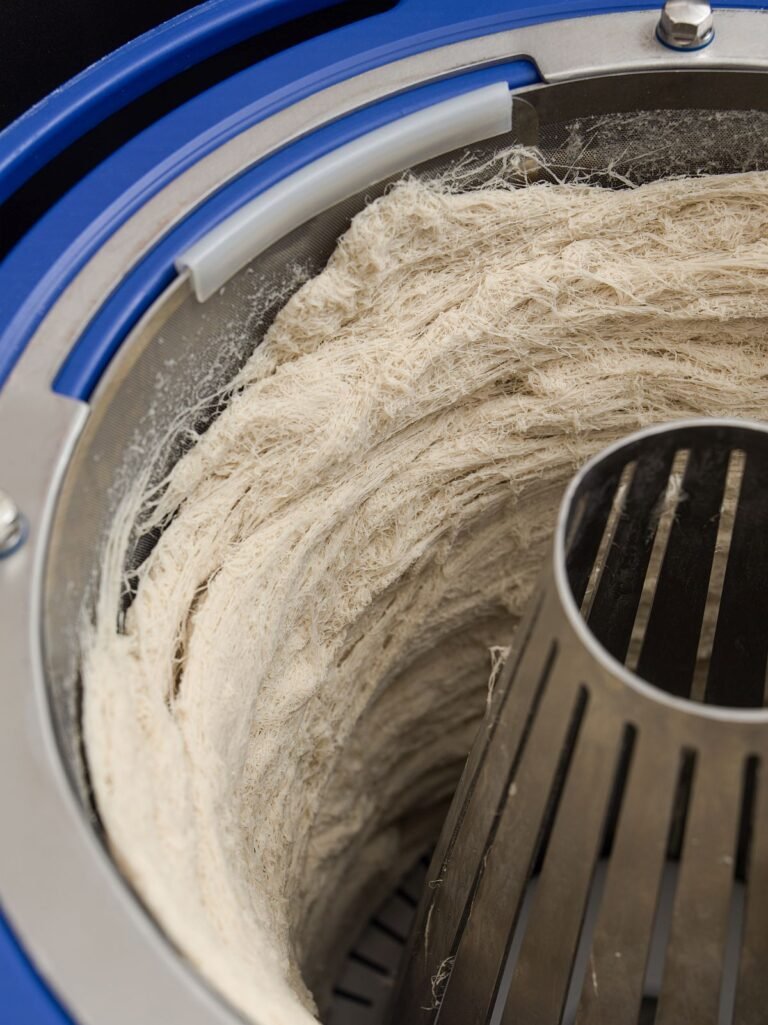“When we think about the history, just by the nature of our company and having such a large seed footprint, seed and genetics is an area where we’ve seen a lot of digitization and use of AI, before other segments, because it’s such a data-intensive activity to create new seeds.”
Brian Lutz, VP of digital at Corteva Agriscience, was speaking with AgFunderNews about the company’s approach to AI deployment, a few weeks before the agrichemical and seeds business announced plans to split into two entities.
The company, itself the result of the 2017 merger of Dow’s and DuPont’s agricultural businesses, will split into an ag chemicals entity—New Corteva—and a seeds business—SpinCo.
Corteva CEO Chuck Magro, who will lead SpinCo, says Corteva has already been operating “two essentially separate businesses,” but Corteva spokespeople could not respond to questions about the future of its data and AI assets.
Lutz sits on Corteva’s digital transformation team, which is led by Sam Eathington, who joined Corteva as CTO in 2021 from Monsanto’s Climate unit, where he was chief science officer. He became Corteva’s chief technology and digital officer in 2022.
Even if they have been operating effectively as separate businesses, there are still question marks about what happens to the work Eathington, Lutz, and others have undertaken over the past few years. This work has both created and integrated company-wide AI tools and has also involved organizing and federating data ownership across teams, putting the digital department in a potentially precarious position ahead of a split.
Integrating Granular
One of the first actions under Eathington’s new integrated digital mandate was to reposition Granular, the farm data software and enterprise resource planning (ERP) startup it acquired in 2017, from a farmer-facing product to an internal sales enablement tool.
As part of this, Lutz says that Corteva rebuilt the platform to enable sales reps to see data across all the accounts they serve and to automatically flag issues at any time during the season, helping them proactively serve customers.
Granular has a variety of AI models analyzing on-farm data alongside weather, soil, genetics, and trial data to help reps position products better and understand/diagnose performance issues via a “single pane of glass” view, as Lutz puts it. Farmers can still log in to view and analyze their data, and this is free of charge, but Lutz says his team expects the “reps will be the primary ones helping customers work with their data.”
The shift wasn’t just technical—it required dissolving Granular’s independent structure, selling off parts of the business, and realigning teams around a new purpose. “It wasn’t easy, but clear, consistent communication and a compelling purpose inspired our teams to embrace the change,” Lutz explains. “When people see the value in what they’re building, they rally behind it.”
Corteva also built and integrated CARL (Corteva’s Agronomic Research Library) into Granular. CARL is a gen-AI tool that helps independent sales reps and agronomists access information through a ChatGPT-style interface. Unlike typical retrieval systems that simply surface documents, CARL has been augmented with decades of proprietary agronomic research and Pioneer product information. When a sales representative encounters a specific agronomic question—optimal planting populations for a particular hybrid in specific soil conditions, for instance—CARL can synthesize relevant research rather than simply pointing to archived studies and providing answers in simpler language.
Beyond seeds, Corteva is piloting a fungicide timing model in the US that combines field-specific information from customers’ farms with internal data to help farmers know exactly when to spray to combat key corn diseases. “We regularly help them increase yields by 4-10 bushels per acre, which is considerable,” Lutz said in a US congressional testimony about the use of AI in farming earlier this year.
On the gen-AI front more broadly, Corteva has deployed a tool that drafts regulatory documents to help save time its team spends on “thousands of annual filings and freeing them up for higher-value work,” says Lutz. “The documents are still reviewed by members of our team who are essential, but the efficiency gains are substantial.”
“We have additional agentic AI solutions that we are developing internally to support other functions along the value chain, such as our breeding and seed production teams,” he adds.
Federated data: preparing for a split?
Another key initiative for Lutz and his colleagues has been creating a federated data structure to better enable AI across the company’s value chain, something Lutz strongly believes is the key to unlocking AI’s true value in a large corporation.
“It’s really when you can connect end-to-end that you can take [AI use] to the next level…because then you’re not just talking about better positioning the products that you’ve already created for customers, but you can start to influence your production plans, as well as even influence the products that you’re promoting out of R&D into production.”
Connecting business units from end to end is no small task, requiring the integration of disparate datasets at opposite ends of the value chain—a challenge Lutz describes as a “governance and cultural challenge,” not a technology one.
In this work, he and his colleagues have been advocating for a shift from application-centric thinking to treating data as products, where the scientists, agronomists, and product developers who generate and use the data take ownership and are responsible for maintaining data quality and structure. Lutz’s team then put in place a federated data infrastructure, which he describes as “sort of self-serve.”
“Any of those data domain owners can then register, maintain, and monitor the data that they’re responsible for. And as you build that culture of federated data management, that’s what allows a company as large as Corteva to start to get their entire data ecosystem into a much better shape, so that then you can really move fast when it comes to things like AI and analytics.”
From the outside, it’s hard to know how this works in practice, but if the federated data model and domain ownership structure Lutz describes were designed for independence—with clear interfaces between business units—Corteva’s split into two could proceed relatively smoothly, with both new companies maintaining strong digital capabilities and data platforms to advance AI initiatives.
But if the integration depends on informal collaboration, shared talent pools, and unified leadership, the separation could fragment capabilities that have taken years to build.
Analyst skepticism
The lack of clarity around digital capabilities comes amid broader analyst skepticism about the Corteva split overall, as heard on the Q4 investor call shortly after the announcement.
Jason Miner, head of agriculture for Bloomberg Intelligence, argued that “the development pathway becomes more complex, and I don’t think farmers need more complexity.” He questioned whether the development incentives to take risks on complementary seeds and chemistries remain when companies are separated: “You can take a bet on the seeds, but if you need a chemistry, whether it’s a Roundup herbicide or a dicamba that doesn’t drift, you need somebody on the chemistry side who’s willing to take the leap with you.”
Oppenheimer analyst Kristen Owen noted that “crop protection cycles [are] complementary to seed, with faster innovation times and R&D synergies providing farmers with full-acre solutions.” She questioned whether the crop protection business can sustain investment in novel active ingredients or biologicals without “that cash cow generation of the seed business.”
A Bank of America analyst called the split “lacking in strategic and financial sense,” while others warned that “breaking up Corteva’s integrated model risks ceding ground to competitors like Syngenta and Bayer.”
These concerns about R&D synergies and commercialization pathways extend logically to digital infrastructure and raise the question of whether a time-consuming asset split could delay the rollout of more advanced AI capabilities and put both sides of the business behind their competitors.
Where will AI capabilities land?
While Corteva has deployed AI across both sides of the business, some of the work appears weighted towards the seeds business. The company’s use of AI is also generally more advanced in seeds, given the long history of genetic research, according to Lutz. “We work very differently in that group than we have in others—even in crop protection R&D or manufacturing or commercial,” he says.
CARL is purely focused on seed research, and while Granular can help with crop protection decisions, the framing remains seed-centric with language focused on how to “get the most from your Pioneer genetics.” Will those tools live with SpinCo? And what access, if any, will the new entities have to data and capabilities on the other side?
On the investor call, the company indicated that biologicals—which currently bridge both businesses but will sit with New Corteva—will likely involve an R&D partnership between the two new entities; could that involve access to Granular and CARL for research, for example?
Another potentially significant and telling development on the seeds side is the recent roll-out of “One Seed,” an internal initiative aimed at better integrating all departments of its seed business—from R&D to production to sales and marketing—under a “single vision,” Lutz reveals to AgFunderNews.
As part of this work, Corteva has created a digital twin of the seed business to help the company optimize decisions across the value chain. The digital twin “will continue evolving toward a full enterprise-scale representation. It’s an ecosystem of interconnected models, combining advanced AI, mathematical optimization, and mechanistic modeling—all developed in-house—to continuously enhance how we design, produce, and deliver seed innovations at scale,” he says.
The digital twin is surely destined for SpinCo. One Seed also appears to have built the cultural foundation necessary to develop and deploy AI tools along its value chain. According to Lutz, the leaders who “stepped up to champion” the unified One Seed vision and integration efforts, even as “silos and differing priorities posed challenges, as is often true in large organizations,” were key to its rollout. “The collective value unlocked by collaboration across functions is far greater than what any single area can achieve alone,” he adds. A necessary corporate culture shift was also a challenge in pivoting Granular and creating a new data infrastructure, according to Lutz.
On the chemicals and biologicals side of the business, distinct AI capabilities span the value chain, from predicting protein structures in pests and searching for specific molecules that can interact with those proteins to optimizing its manufacturing processes—something it earned a finalist spot in the Manufacturing Leadership Awards. Yet a Corteva spokesperson was unaware of a similar One Seed-type initiative on that side of the business.
The question for New Corteva is whether it needs to replicate that cultural transformation in biologicals and crop protection, potentially starting from a less mature foundation. Corteva declined to clarify what will happen to the centralized digital transformation team, leaving open questions about whether both companies will maintain equivalent AI capabilities or whether years of integrated infrastructure development will now need to be rebuilt, potentially duplicated, or divided.
But if Lutz is right that culture and governance matter as much as technical architecture, both new entities will need more than just data infrastructure—they’ll need leaders willing to champion integration in what will, once again, be separate companies operating with separate priorities.
Further reading:
Are agrifood corporates pushing their AI agendas enough?
Corteva Catalyst exec on investing in agrifoodtech startups: ‘We’re trying to be very intentional…’
The post Corteva’s planned separation raises questions about AI and data split appeared first on AgFunderNews.




